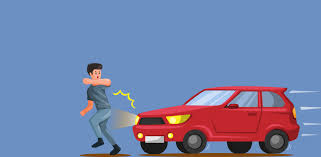Motor vehicle Laws Chile
In Chile, motor vehicle laws are established to ensure road safety, environmental protection, and efficient traffic management. Key aspects include:
Driving License Requirements:
License Classes: Chilean driver's licenses are categorized as follows:
Class A Licenses (Professional):
- A1: For operating taxis.
- A2: For driving taxis, ambulances, or vehicles transporting 10 to 17 passengers.
- A3: For operating taxis, school transport, ambulances, or vehicles with unlimited passenger capacity.
- A4: For driving vehicles with a gross weight exceeding 3,500 kg.
- A5: For operating vehicles with a gross weight over 3,860 kg, including articulated vehicles.
Class B License (Personal):
- For individuals aged 18 and above, permitting the operation of vehicles with up to 9 seats or cargo vehicles with a gross weight up to 3,860 kg.
Class C License (Motorcycles):
- For operating motorcycles and similar vehicles.
Class D License (Special Vehicles):
- For machinery such as tractors and mechanical shovels.
Class E License (Animal-Drawn Vehicles):
- For driving animal-drawn vehicles.
Class F License (Emergency Vehicles):
- For operating vehicles used by armed forces, police, and fire services.
Professional licenses (Classes A) also authorize the holder to operate vehicles classified under Class B.
Traffic Regulations:
Driving Orientation: Vehicles in Chile drive on the right side of the road.
Speed Limits: Speed limits vary based on the area and vehicle type. It's essential to observe posted speed limit signs, as exceeding them can result in fines and penalties.
Seat Belt Usage: Seat belts are mandatory for all passengers, including those in the back seat.
Mobile Phone Use: Using a mobile phone while driving is illegal unless using a hands-free system.
Blood Alcohol Concentration (BAC): The legal BAC limit is 0.03%. It's advisable to avoid consuming alcohol before driving, as impaired driving is a serious offense.
Vehicle Emission Standards:
Since September 2014, all new cars in Chile must comply with Euro 5 emission standards.
From September 2022, all new light and medium vehicle models are required to meet Euro 6b standards.
By September 30, 2025, all new light and medium vehicle models must comply with Euro 6c standards.
Vehicle Safety Features:
- As of February 2025, Chile mandates that all new motorcycles with engines of 150 cc or more must be equipped with Anti-lock Braking Systems (ABS). Motorcycles with engines between 50 cc and 150 cc are required to have Combined Braking Systems (CBS) or ABS.
Vehicle Registration Plates:
- Chilean vehicle registration plates typically feature a white background with black text. The format consists of two letters, followed by four numbers, and then a single letter (e.g., AB 1234 C). The first letter indicates the vehicle's region of registration.
Vehicle Import Regulations:
Age Restrictions: Chile permits the importation of used vehicles up to five years old. Vehicles older than five years are generally prohibited from being imported.
Taxes and Duties: Imported vehicles are subject to taxes and duties based on their value, engine capacity, and emissions standards compliance.
Traffic Enforcement:
- Traffic violations are subject to fines, license points deductions, and, in severe cases, license suspension or revocation. Enforcement is carried out by municipal police and Carabineros (national police).
For comprehensive and current information, it's advisable to consult official Chilean government sources or contact the nearest Chilean embassy or consulate.




0 comments